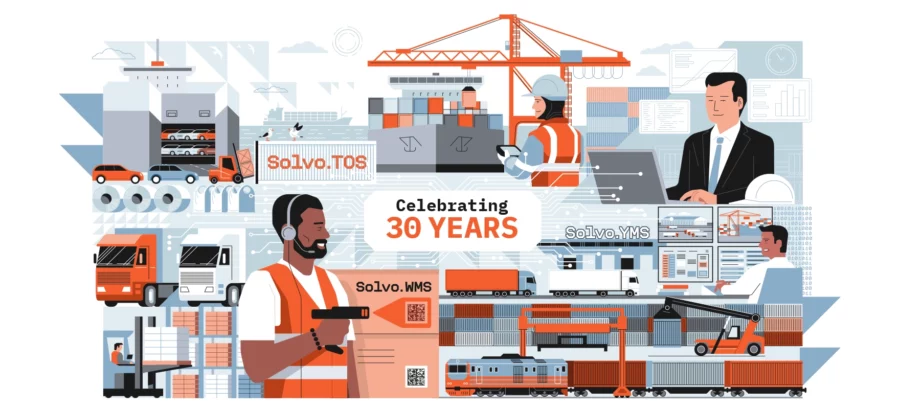The growing turnover of vehicles places additional strain on warehouse operations. Why?
The more vehicles visit a warehousing facility each day, the longer it takes to process them — especially when done manually. For large warehouse complexes, this often becomes a bottleneck, leading to both time delays and human error. Solvo.YMS can seamlessly resolve these issues, no matter how complex the challenge.
Challenge
One of our clients, a major Eastern European manufacturer specializing in cable support systems and low-voltage equipment, needed to process up to 200 vehicle visits daily, with an average of 70-150 vehicles. With over 30,000 products in its range and operations spanning millions of square miles, the company needed an automation solution to handle the growing workload efficiently.
Before Solvo.YMS was implemented, the vehicle visit planning process was handled manually. Dispatchers entered data into the system, including driver information, route details, visit purpose, vehicle specifics, and more. However, as the volume of vehicle visits grew, this manual process became increasingly time-consuming, and the risk of errors also escalated.
Solution
To address these issues, the following steps were taken:
- Integration with the Transportation Management System (TMS): By connecting Solvo.YMS with the client’s TMS, all necessary data was automatically transferred to the system. This integration significantly reduced planning time for receiving and placing products in the warehouse. Errors due to manual processing also have been minimized.
- Automated Access Control: Solvo.YMS supports multiple access control scenarios for managing vehicle movements during the multi-step visit process. For instance, the system can assign specific entry and exit gates to different groups of carriers, improving efficiency and streamlining operations.
- Automated Yard Routing: Vehicles can be quickly managed and easily navigate the yard with the help of automated route planning, ultimately saving valuable time.
A key component of the automation process was the development of a mobile app designed specifically for this client. This app simplified driver registration and navigation, offering a seamless experience.
So, after the successful integration of Solvo.YMS at the primary facility, the solution was also rolled out to other sites within the company. As a result, this leading manufacturer, with over 25 years of history, was able to modernize its warehouse operations in a short period and significantly increase efficiency.






